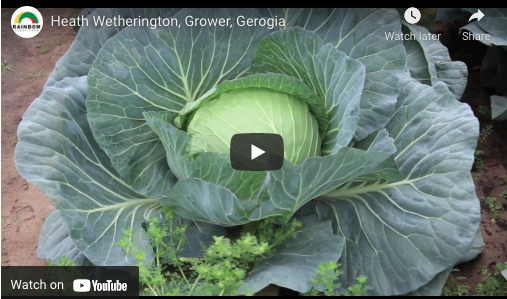The Making of Rainbow Plant Food
To produce the best yields and highest quality, your crops need all of the essential plant nutrients. Even if adequate amounts of the primary nutrients – nitrogen, phosphorous and potassium – are available, a shortage of one or more secondary or micronutrient could limit yields and reduce the quality of your crop.
Rainbow Plant Food is a homogeneous, granular fertilizer. Precise amounts of each nutrient – primary and secondary — as well as micronutrients, are chemically compounded to form a homogeneous mixture. As a result, each granule contains nearly identical amounts of all the ingredients.
To create the uniform blend of primary, secondary and micronutrients in every granule of Rainbow Plant Food, we employ an elaborate and dependable four-step manufacturing process. Each step ensures that every granule contains the perfect nutrient blend needed to maximize distribution and plant availability.
“The process of [manufacturing] Rainbow is unique compared to any other fertilizer,” says Tim Hadden, Account Representative for Rainbow Plant Food Products.
Rainbow Plant Food is a homogeneous product in which “we’re introducing liquids and solids together to make one unique compound,” Hadden says.
Here, we’ve broken the process down into five phases.
Phase One: Combination
The process begins as computers weigh out exact portions of dry and pulverized nutrients including nitrogen, phosphorus, potassium, sulfur, and micronutrients, ensuring every granule contains the perfect mix.
Phase Two: Granulation/Ammoniation
Next, precisely metered amounts of liquid nitrogen, phosphoric acid, steam, and water meet with the carefully weighted dry raw materials in a rotating drum called the ammoniator. The resulting chemical reactions and heat cause dry salts to convert to a liquid phase, which hardens again in the pellet shape of granules.
Phase Three: Drying and Cooling
Piping hot granules go from the ammoniator to a rotary dryer, which dries them with heated air that flows in the same clockwise direction as the granules themselves. The granules then go to a rotating cooler, which cools them with heated air flowing in the opposite direction.
Phase Four: Sizing
Conveyor belts then rake the granules over a bank of two-surface vibrating screens that allow only granules of uniform size and shape to receive a dust-suppressant coating before going to storage. Undersized particles are sent back to the ammoniator to be re-granulated. Oversized particles are crushed and re-screened.
Phase Five: Testing
Once these nutrient-packed granules are ready to hit the storage bins, Rainbow technicians step in to test the products to make sure each and every one is up to premium quality analysis. These technicians are regularly sampling our granules to check for quality and consistency. The result: a product that’s second to none, time after time.
After these five phases, some rainbow plant food will move to our state-of-the-art bagging machine, and some will go out directly as bulk product.
For more on how Rainbow Plant Food is made, watch this short video.



